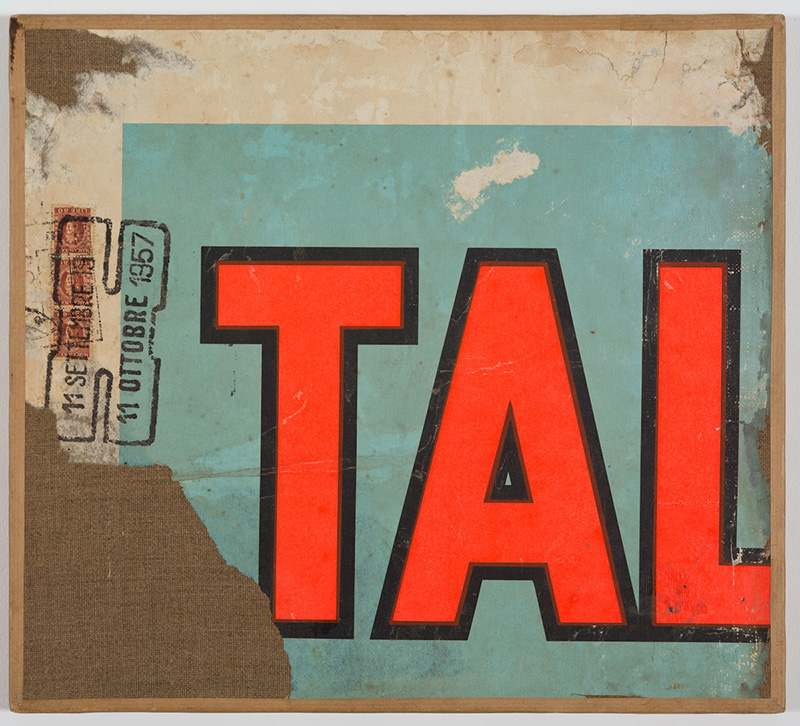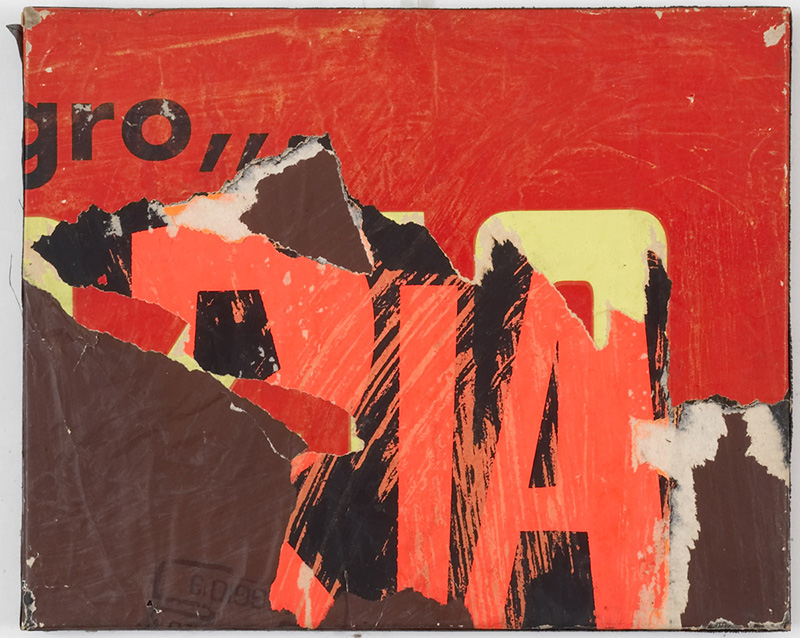ART-PRESENTATION: Mimmo Rotella-Selected Early Works
 The impact of Mimmo Rotella as one of the pioneering artists of the 20th Century is evidently present throughout contemporary landscapes of visual culture. Rotella’s eye for “reporting” culture and commentary on cultural politics have made an immeasurable impact on the theoretical discourse surrounding contemporary artistic production techniques. His work is famous in suggesting a concept of ‘fresh vision’ on accepted reality and poetic inspiration in what appears banal.
The impact of Mimmo Rotella as one of the pioneering artists of the 20th Century is evidently present throughout contemporary landscapes of visual culture. Rotella’s eye for “reporting” culture and commentary on cultural politics have made an immeasurable impact on the theoretical discourse surrounding contemporary artistic production techniques. His work is famous in suggesting a concept of ‘fresh vision’ on accepted reality and poetic inspiration in what appears banal.
By Dimitris Lempesis
Photo: Gladstone Gallery Archive
The exhibition “Selected Early Works” at Gladstone Gallery presents historical works realized by Mimmo Rotella from 1953 to 1962. Representing a big change in the artist’s practice, the compositions on view are some of the first examples of Rotella’s pioneering décollage and retro d’affiche techniques. Mimmo Rotella’s first solo exhibition, with abstract-geometrical works, was held in 1951 at the Galleria Chiurazzi in Rome. Also in 1951 he had his first contact with French artists, exhibiting in Paris at the “Salon des Realistes Nouvelles”. For the period bridging 1951-52 he obtained a scholarship on the part of the Fullbright Foundation, thanks to which he was able to sojourn in the United States at the University of Kansas City with the appointment as Artist in Residence. Here he created a large mural composition and recorded phonetic poems with the accompaniment of percussion instruments. Following his return to Rome in 1952, Rotella consciously abandoned Abstract painting as his primary form of expression. Stirred by the presence of movie and advertising posters around the city, inspired by a cadre of other artists in the Italian capital at this time, such as Alberto Burri, Robert Rauschenberg, Salvatore Scarpitta, and Cy Twombly, he improvised what he himself has defined as “Zen illumination”. This saw the origin of the décollage (initially the collage) by way of glueing pieces of posters ripped off on the street onto canvas. Here Rotella adopted the collage as used by the cubists, ‘contaminating’ it with the dadaist and desecrating matrix of the objet trouvé. In Rome these works were showed for the first time in an exhibition entitled “Esposizione d’arte attuale” (1955). He carried out the so-called double décollage: that is, the poster firstly removed from the wall and then torn up in the studio. In this period he also made use of the retros d’affiche, using the verso of the posters with the result obtained of non-figurative and monochrome works. He began to receive acknowledgements in 1956 with the Graziano Award, followed in 1957 by the Battistoni e della Pubblica Istruzione Award. With the “Cinecittà” series of 1958 he chose both the figures and faces of film posters, orientating his production towards works of a more figurative type. Already recognized by criticism at the close of the ‘50s as being an exponent of the Young Roman Painting, Rotella at night, armed with a penknife, he not only ripped off posters but also pieces of the metal sheeting and zinc of the mounting frames of the billboard zones of the Rome City Council. In 1958 he was visited in Rome by the French critic Pierre Restany, a meeting which was to lead to a long friendship. In the same year he was included in the exhibition entitled “Nuove tendenze dell’arte italiana”, organized by Lionello Venturi. In 1960 he joined the Nouveau Réalisme group (although he did not sign its manifesto). The theoretician of this movement was Pierre Restany and included amongst others: Yves Klein, Jean Tinguely, César Baldaccini, Daniel Spoerri, Arman and Christo. The group also included the French artists Hains, Villeglé and Dufrêne who in fact also worked on the collage, albeit in an autonomous way. By working in the most total isolation Rotella had anticipated the path of his French colleagues who were only exhibited for the first time in 1957 at the Galerie Colette Allendy in Paris. In1964 he was invited to take part in the Venice Biennial. Similar to his American Pop Art counterparts, Rotella’s excavation of wide-ranging social figures roots the décollages in the time of their creation, while simultaneously underscoring the ephemerality of the present moment.
Info: Gladstone 64, 130 East 64th Street, New York, Duration: 4/3-15/4/17, Days & Hours: Tue-Sat 10:00-18:00, www.gladstonegallery.com and www.gladstone64.com


